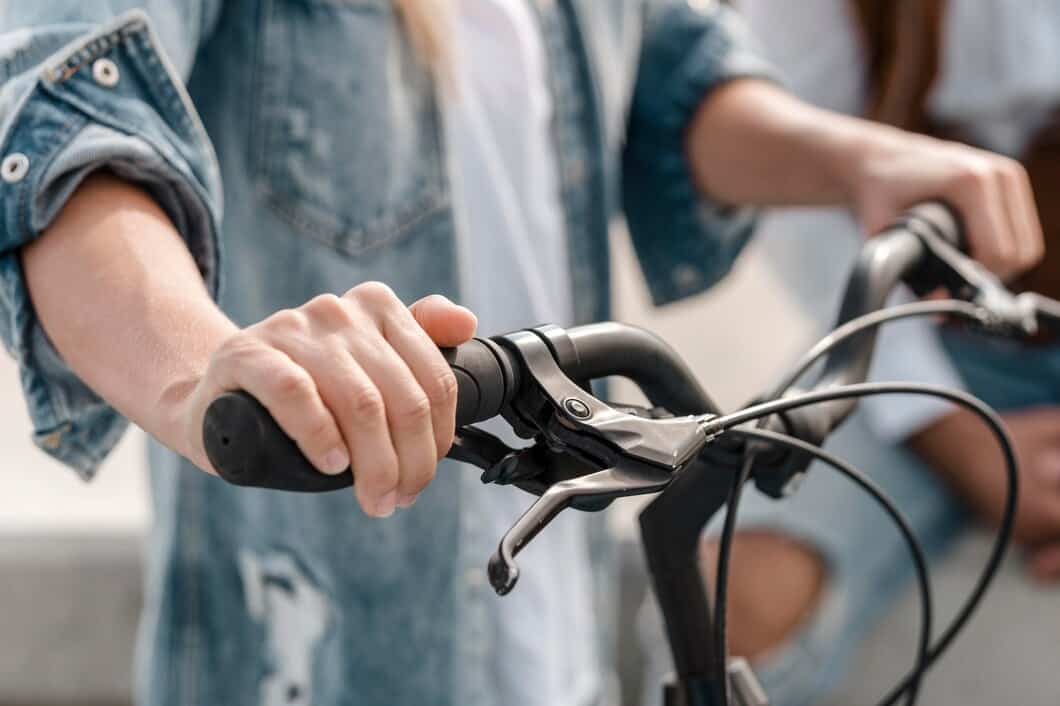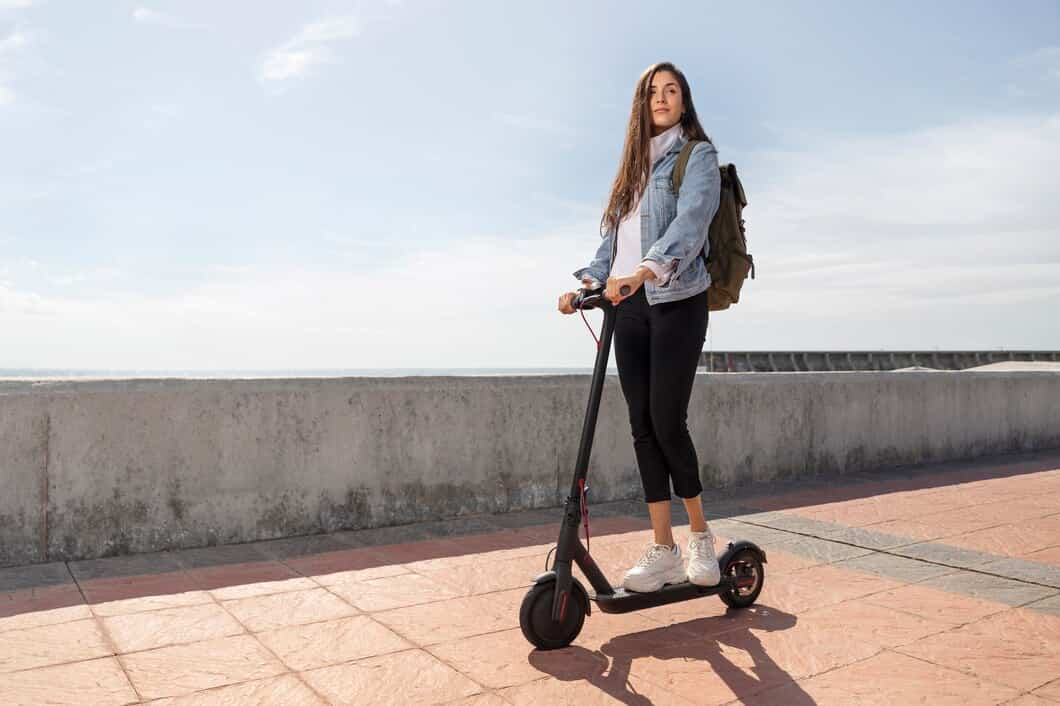Does Pedaling An Electric Bike Charge The Battery?
Time: 12 Apr 2024 22:20

When it comes to riding an electric bike, many people wonder if pedaling the bike will charge the battery. The answer to this question is a little more complicated than a simple yes or no. In this abstract, we will explore the factors that affect whether or not pedaling an electric bike charges the battery, and we will provide some tips on how to maximize the charging efficiency of your electric bike.
There are a few things that affect whether or not pedaling an electric bike will charge the battery. One of the most important factors is the type of electric bike that you have. Some electric bikes have a regenerative braking system, which allows the bike to capture energy when you brake and use it to recharge the battery. Other electric bikes do not have a regenerative braking system, so they will not charge the battery when you brake. Another factor that affects whether or not pedaling an electric bike will charge the battery is the terrain that you are riding on. If you are riding on a flat surface, you will not need to use as much power to pedal the bike, so the battery will not charge as quickly. However, if you are riding on a hilly surface, you will need to use more power to pedal the bike, so the battery will charge more quickly.
Types of electric bikes
Electric bikes come in different types, each with its own characteristics. Type 1 e-bikes provide electric assistance while pedaling, but the motor cuts off at 20 mph. Type 2 e-bikes offer throttle-only operation, providing electric assistance without pedaling. Type 3 e-bikes combine the features of Type 1 and Type 2, allowing for both pedaling and throttle-only operation.
Additionally, there are Class 1, Class 2, and Class 3 e-bikes, which are classified based on their assisted speed and power output. Class 1 e-bikes assist up to 20 mph, Class 2 e-bikes assist up to 28 mph with pedaling, and Class 3 e-bikes assist up to 28 mph with or without pedaling.
How an electric bike works
An electric bike is a bicycle with an integrated electric motor that can assist the rider's pedaling. The motor is powered by a rechargeable battery, which is typically mounted on the frame of the bike. When the rider pedals, the motor provides additional power to the wheels, making it easier to ride up hills or accelerate quickly.
The motor on an electric bike is typically controlled by a throttle or a pedal-assist system. The throttle allows the rider to control the amount of power that the motor provides, while the pedal-assist system automatically provides power when the rider pedals. Some electric bikes also have a regenerative braking system, which uses the motor to generate electricity when the rider brakes, helping to recharge the battery.
Electric bikes are becoming increasingly popular as a way to get around town or commute to work. They offer a number of advantages over traditional bicycles, including reduced effort, increased speed, and the ability to travel longer distances. However, electric bikes are also more expensive than traditional bicycles, and they require regular maintenance to keep them running properly.
If you are considering buying an electric bike, it is important to do your research and find a bike that is right for you. There are a number of different types of electric bikes available, so it is important to find one that meets your needs and budget. You should also consider the cost of maintenance and the availability of charging stations in your area.
The role of pedaling in electric bikes
Pedaling an electric bike plays a crucial role in the overall riding experience. Primarily, it allows you to exercise and stay active while enjoying the benefits of electric assistance. By pedaling, you can engage your muscles, improve cardiovascular health, and contribute to a more comprehensive workout. Moreover, pedaling helps you control the speed and acceleration of the bike, providing a more natural and intuitive riding experience.
Furthermore, pedaling on an electric bike can extend the battery life. When you pedal, the motor has less work to do, which reduces energy consumption. This means you can travel longer distances or climb steeper hills without draining the battery as quickly. By combining human power with electric assistance, you can optimize the efficiency of the bike and enjoy a more sustainable riding experience.
In certain electric bike models, pedaling can also contribute to battery charging through a process called regenerative braking. When you brake or slow down the bike, the motor acts as a generator, converting the kinetic energy back into electrical energy. This energy is then stored in the battery, providing an additional source of power. While regenerative braking does not fully charge the battery, it can help extend its life and provide a small boost when needed.
Overall, pedaling an electric bike offers several advantages, including exercise, battery life extension, and improved riding control. It allows you to customize your riding experience, optimize efficiency, and enjoy the benefits of both human power and electric assistance.
Regenerative braking

Regenerative braking is a system that captures the kinetic energy of a moving vehicle and converts it into electrical energy. This energy is then stored in the vehicle's battery, which can be used to power the motor or other electrical components.
In an electric bike, regenerative braking is typically used when the rider brakes or coasts downhill. When the rider brakes, the motor acts as a generator, converting the kinetic energy of the bike into electrical energy. This energy is then stored in the battery.
Regenerative braking can help to extend the range of an electric bike by reducing the amount of energy that is lost during braking. It can also help to improve the safety of an electric bike by reducing the stopping distance.
Factors affecting battery charging while pedaling
Battery charging while pedaling can be affected by several factors. One of the most important is the type of electric bike motor. Some motors, such as hub motors, are more efficient at generating electricity than others, such as mid-drive motors. Additionally, the amount of pedaling effort applied by the rider will also affect the rate of charging. A rider who pedals harder will generate more electricity than a rider who pedals more lightly. Finally, the condition of the battery itself can also affect the rate of charging. A battery that is in good condition will charge more quickly than a battery that is old or damaged.
Other factors that can affect battery charging while pedaling include the terrain being ridden on, the ambient temperature, and the speed at which the rider is pedaling. Riding on flat terrain will generate more electricity than riding on hilly terrain. Riding in cold weather will also decrease the rate of charging, while riding in warm weather will increase the rate of charging. Finally, riding at a higher speed will generate more electricity than riding at a lower speed.
By understanding the factors that affect battery charging while pedaling, riders can maximize the efficiency of their electric bikes. By choosing the right type of motor, applying the appropriate amount of pedaling effort, and maintaining the battery in good condition, riders can ensure that their electric bikes are always ready to go when they need them.
Benefits of pedaling an electric bike
Pedaling an electric bike offers several benefits. Firstly, it can help you maintain a healthy lifestyle. By pedaling, you engage various muscle groups, promoting cardiovascular health and improving overall fitness. Additionally, electric bikes provide assisted pedaling, making it easier to tackle hills and longer distances without getting overly fatigued. This can be particularly advantageous for individuals who may not be as physically fit or have joint or mobility issues.
Moreover, pedaling an electric bike contributes to extending the battery's life. The motor and battery work together to power the bike, and pedaling reduces the strain on both components. As a result, the battery lasts longer, allowing you to travel further distances on a single charge. Additionally, pedaling helps regenerate the battery through a process called regenerative braking. When you brake while pedaling, the motor captures the kinetic energy and feeds it back into the battery, further extending its lifespan.
Safety considerations
Electric bikes are a great way to get around, but it's important to be aware of the safety considerations before you hit the road. First, always wear a helmet when riding an electric bike. This will help to protect your head in the event of a fall. Second, be aware of your surroundings and ride defensively. Electric bikes can go faster than traditional bikes, so it's important to be aware of traffic and pedestrians. Third, don't ride under the influence of alcohol or drugs. This will impair your judgment and reaction time, which could lead to an accident.
Finally, make sure your electric bike is in good working order before you ride it. Check the brakes, tires, and electrical system to make sure everything is functioning properly. By following these safety tips, you can help to ensure that you have a safe and enjoyable ride on your electric bike.
Maintenance tips
If you want your electric bike to last as long as possible, maintenance is key. Here are a few tips to help keep your e-bike running smoothly:
- Keep your bike clean. Dirt and grime can build up on your bike's components, causing them to wear down prematurely. Make sure to clean your bike regularly with a mild detergent and water.
- Lubricate your bike. The moving parts of your electric bike need to be lubricated regularly to keep them running smoothly. Use a bike-specific lubricant to oil your chain, gears, and other moving parts.
- Check your tire pressure. The correct tire pressure is essential for the safety and performance of your e-bike. Check your tire pressure regularly and adjust it according to the manufacturer's recommendations.
By following these simple maintenance tips, you can help keep your electric bike running smoothly for years to come.
In addition to these maintenance tips, it's also important to read your electric bike's owner's manual. The owner's manual will contain specific instructions on how to care for your particular model of e-bike.
Frequently Asked Questions
Do electric bikes charge while pedaling?
Only certain electric bikes, known as regenerative braking electric bikes, can charge while pedaling. When you pedal a regenerative braking electric bike, the motor acts as a generator, converting the kinetic energy of your pedaling into electrical energy that is stored in the battery.
Can you charge an e-bike battery by pedaling backward?
No, you cannot charge an e-bike battery by pedaling backward unless the bike has a regenerative braking system. With regenerative braking, energy is generated during braking and used to recharge the battery. However, simply pedaling backward without a regenerative braking system will not charge the battery.
Is it possible to cycle an electric bike without the battery?
Yes, it is possible to cycle an electric bike without the battery. However, the bike will behave like a regular bicycle, and you will have to pedal to power the bike. The electric motor and other electrical components will not function without the battery.
What are the benefits of using a regenerative braking electric bike?
Regenerative braking electric bikes offer several benefits. They can extend the range of the bike by recharging the battery while braking. They also improve safety by providing additional braking power. Additionally, regenerative braking can reduce wear and tear on the brake pads.
Summary
In conclusion, electric bikes are an efficient and environmentally friendly way to get around. While pedaling an electric bike does not directly charge the battery, it can help to conserve battery life and extend the bike's range. By understanding how electric bikes work and how to use them effectively, you can maximize their performance and enjoy a great riding experience.
If you're considering buying an electric bike, be sure to do your research and choose a model that fits your needs. With a little care and maintenance, your electric bike will provide you with years of reliable and enjoyable riding.
Recommendation
Does pedaling an electric bike charge the battery?
When it comes to riding an electric bike, many people wonder if pedaling the bike will charge the battery. The answer to this question is a little more complicated than a simple yes or no. In this abs...
How fast will a 500 watt e-bike go?
Electric bikes, or e-bikes, are becoming increasingly popular as a way to get around town. They offer the benefits of a traditional bicycle, such as exercise and fresh air, with the added boost of an...
What is the lifespan of the eBike battery?
The lifespan of an eBike battery is a crucial factor to consider when investing in an electric bike. Several factors contribute to battery lifespan, including battery type, maintenance practices, and...
What's the fastest an e-bike can go legally?
What is the legal speed limit for e-bikes? The legal speed limit for e-bikes varies depending on the jurisdiction. In the United States, the legal speed limit for e-bikes is 20 mph on federal lands a...
How far can an electric bike go on a single charge?
An electric bike's range on a single charge is determined by various factors, including battery capacity, motor efficiency, terrain, and rider weight. A typical e-bike can travel between 20 and 50 mil...



